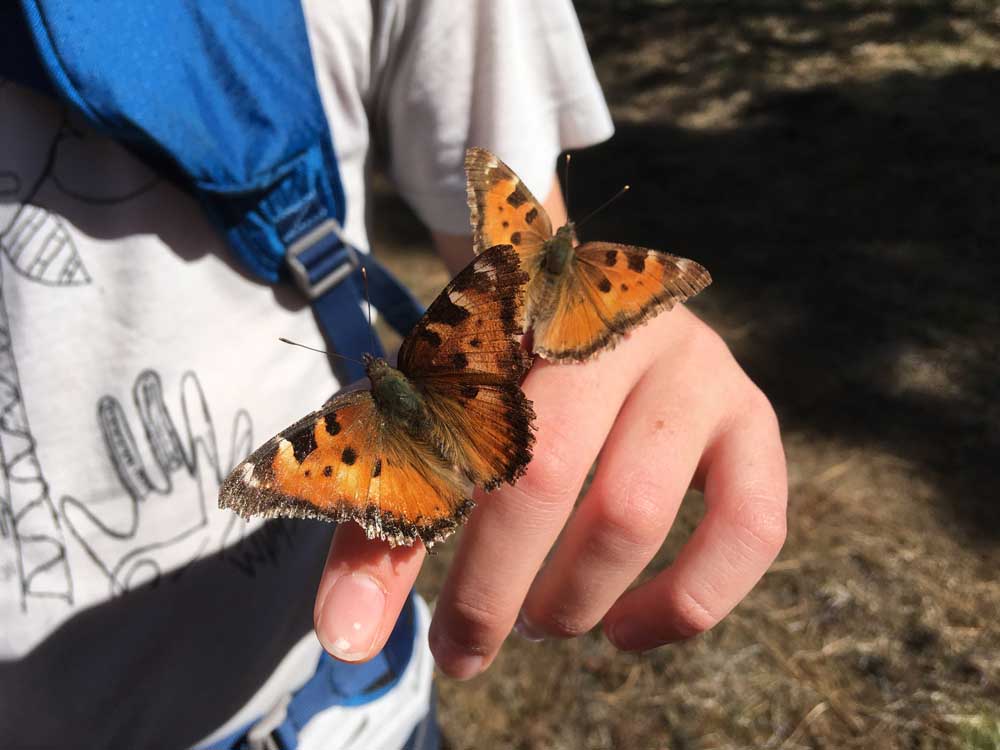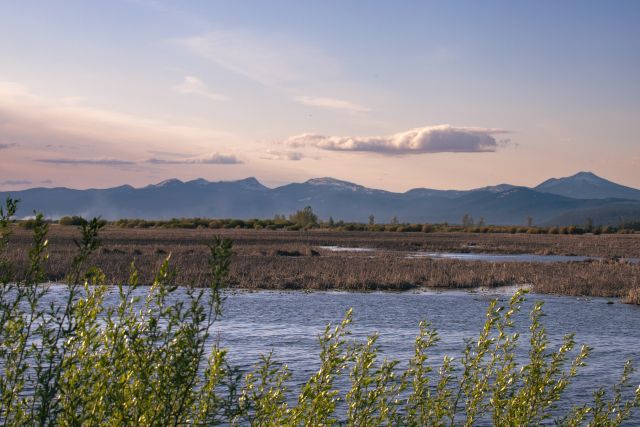Summer is butterfly time in Central Oregon
Published 3:45 am Friday, June 24, 2022

- California tortoiseshell butterflies land on a hand during a springtime walk at the Metolius Preserve.
Summer is finally here, and with it comes ample opportunity to get outside and explore. One sure sign of the season is the emergence of butterflies. The longer, warmer days bring these colorful creatures out in our forests, meadows and canyons. Watching them as they zig and zag through the sky can be challenging, but they will often stop to perch or sip nectar or salts. When they do, grab your chance to take in their dazzle and delicate wonder. They really are among nature’s most amazing creatures.
As you head out and about this summer, watch for these seven common butterflies of Central Oregon:
Cabbage white (Pieris rapae): Look for these small butterflies in gardens, around town, or just about everywhere. Cabbage whites are white with black tips on their forewings. You’ll notice female cabbage whites have two black spots while males have only one. These butterflies are extremely common and can even be found on roadsides and near dandelion patches.
California tortoiseshell (Nymphalis californica): Look for this medium-sized butterfly on sunny days in Central Oregon. With their wings spread, they’re bright orange with black wing margins and black spots. You’re likely to find them on local trails where they frequently “puddle” sipping salts and minerals from damp soil. Watch out for when they gather in huge swarms near the mountains during the summer.
Echo azure (Celastrina echo): You can find these small (1¼ inches or less) butterflies throughout Central Oregon. Spring azures are a chalky, pale grey-blue with black spots on the underwing, but most folks notice the flash of dazzling, vivid blue on the top side of the wings. Look for them flitting about the edges of woods, in open fields, near wetlands or even in cities. These are often the first blues we’ll see each year.
Western monarch (Danaus plexippus): Though they may not be common in Central Oregon, no butterfly list would be complete without the king of butterflies, the monarch. These 3-inches-or-bigger butterflies are known for their beautiful orange and black pattern, their incredible migration, and sadly, their devastating decline. Central Oregon is in the migration pathway of Western monarch butterflies and serves as an important breeding ground. You can help them thrive by planting native milkweed so they have it as a nectar source when they pass through, and then their caterpillars will have it as their essential food source. Free milkweed seeds are available from Deschutes Land Trust.
Mourning cloak (Nymphalis antiopa): These larger (3 inches and up) butterflies are some of the first to emerge in the spring. Mourning cloaks are a velvety chocolate color, with iridescent blue spots along a bright yellow margin. They overwinter as adult butterflies, emerge in the spring to lay a new batch of eggs, and then the caterpillars grow throughout the summer months. In the fall, you’ll see a fresh batch of adults taking flight and enjoying the final days of warmth before finding cover for their winter hibernation.
Red admiral (Vanessa atalanta): If you see a flash of red in the sky, it might be one of these medium-sized butterflies. Red admirals have an erratic flight path, but you can identify them easily by the red bands on their hind and forewings. Red admiral caterpillars are especially cool since they will wrap themselves up in a nest of leaves and silk while they eat and grow! They’re very common throughout Central Oregon and can often be enticed to land on an arm or shoulder if you sit patiently still in their vicinity.
Western tiger swallowtail (Papilio rutulus): These large common butterflies are widespread in Central Oregon and stunning to watch as they look for nectar in local flowers. Their creamy yellow wings have striking black bands and they have tiny spots of blue and orange near their delicate tails. Their size will sometimes lure viewers into thinking they’re looking at a monarch, but the butter-yellow wings and tiger stripes are a sure indication you’re watching a swallowtail.
Stumped on where to head to find butterflies? Pick a sunny day in early summer and head to the Deschutes Land Trust’s Metolius Preserve. It’s chock full of fluttery creatures to watch and enjoy!






